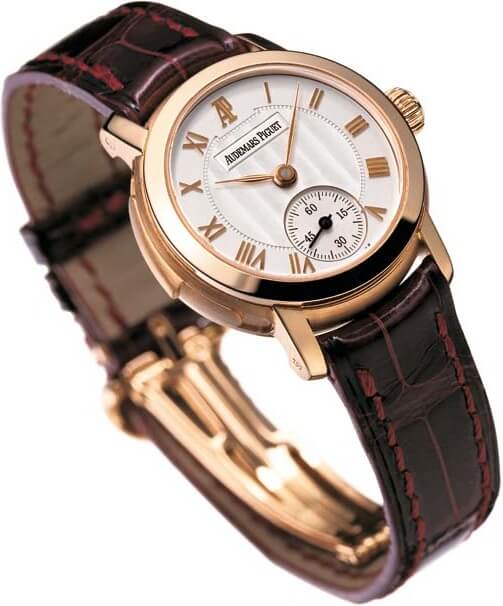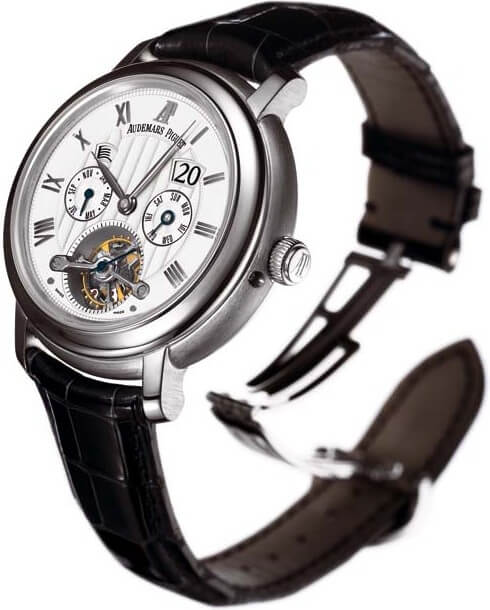“From knowledge to business” is the leitmotiv of Alliance, a programme backed by the Swiss Confederation. It brings together all the Hautes Écoles of French-speaking Switzerland to promote efficient knowledge and technology transfer in the region. Thanks to this initiative, launched two years ago, companies now have access to a pool of some 6,000 researchers at the forefront of their field, all ready to collaborate on innovative projects and particularly with SMEs. Audemars Piguet is one of these, with a project that falls squarely within the programme’s framework: to revive the great tradition of striking watches, a speciality of the Manufacture, and in doing so recapture the chimes once familiar to our ancestors’ ears and revive knowledge that has faded with the passing generations.

A challenging complication
“Striking watches are probably one of the most difficult complications to make,” explained Georges-Henri Meylan, CEO of the brand, at a recent Alliance meeting. “Originally created to give the time by audible means, in particular at night when electricity had yet to be invented, today’s striking watches are usually completed by other complications to enhance a mechanism which by definition is limited to the hour and minute hands. The problem is that not only were striking watches originally pocket watches, and therefore more voluminous, they were clearly the work of craftsmen with a musical ear. With the development of the wristwatch, this expertise was lost. There was no-one to carry the baton.”
The advent of radium and luminous dials made striking movements redundant, while water-resistant cases adversely influenced the transmission of sound and the wearing of the watch against the wrist dulled the resonance of the case. For these reasons, striking mechanisms lost much of their beautiful, sensorial sound. “As mechanisms have become smaller, simpler and more reliable, this type of movement has fallen by the wayside,” Georges-Henri Meylan goes on to note. “For us, the challenge is clear: we want to recreate a beautiful, clear, identifiable sound, one that can be personalised even. And our reference in the matter goes back to 1925.” Behind these objectives, the Manufacture explains, lies a major challenge: to develop a mathematical, configurable and measurable approach to sound which, because it goes beyond trial and error, is no longer solely dependent on the too often subjective impressions of the human ear.

And why not a new alloy
Needing no further convincing, Audemars Piguet embarked on a project put forward by the heads of the technology transfer programme. Watchmakers from the Manufacture have spent the past year working with a panel of five or six researchers, including engineers in materials, acoustics, mathematical modellng and even a luthier who contributes his personal experience in the production of sound. “This multidisciplinary approach is the crux of the project,” says Serge Meylan, technical director at Audemars Piguet. “Creating the sound for a striking watch used to be very much an intuitive process that represented the mark of the craftsman. A little like a recipe which only a great chef can transform into a gastronomic delight. Our role is to bring together specialists who can codify this knowledge, and not just from a mathematical basis.”
This isn’t the first time that Audemars Piguet – riding a wave of success with production expected to grow from 25,000 pieces in 2006 to around 28,000 pieces for 2007 and revenues of over CHF 500 million compared with CHF 400 million the previous year – has ventured into this domain. Its Alinghi line in forged carbon, created for the last America’s Cup race, is also the result of joint research with the École Polytechnique Fédérale in Lausanne into what was an unprecedented material in watchmaking. With this new project, the Le Brassus firm has every intention of restoring striking watches to their former glory, even if this means developing a new alloy to achieve the perfect timbre. Rendezvous in 2010.












